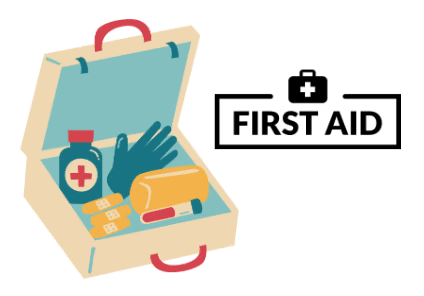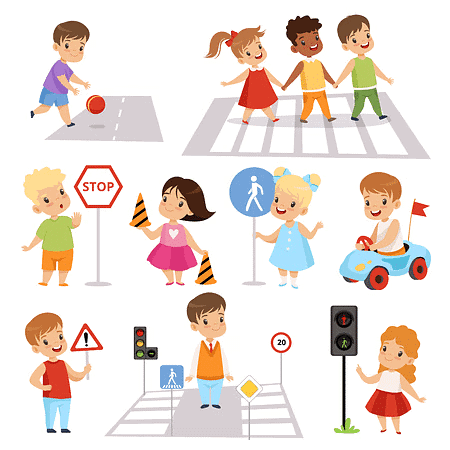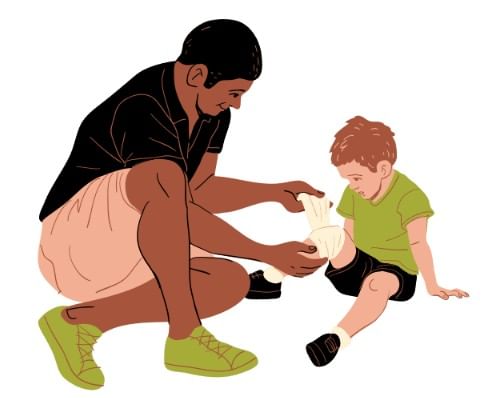Short Answer Questions: Safety & First Aid | EVS for Class 2 PDF Download
Q1. Why is knowing first aid important?
Ans: First aid helps us take care of small injuries quickly and make others feel better before they get full medical help. First Aid
First Aid
Q2. Why is safety important?
Ans: Safety protects us from danger and accidents. It helps keep us and others safe and healthy.
Q3. Name two safety rules to follow at home.
Ans: Never play with fire or electric plugs, and be careful around the stove and sharp objects like knives and scissors.
Q4. What safety tips should you follow at school?
Ans: Don’t run inside the classroom, be careful on the stairs, and never touch things in the science lab without permission.
Q5. Why is it important to have a first aid kit at school?
Ans: A first aid kit helps treat small injuries like cuts or bruises right away.
Q6. How can you stay safe on the road?
Ans: Walk on footpaths, ride bicycles on the left side, wear helmets, and cross roads only at zebra crossings after looking carefully. Safety on Road
Safety on Road
Q7. What should you do when playing games in the playground?
Ans: Follow the rules, don’t push or trip others, and play safely so everyone can have fun without getting hurt.
Q8. What are the first things to do when someone is injured?
Ans: Stay calm, find an adult, don’t move the injured person if you think they are badly hurt, and make them comfortable.
Q9. How do you treat a bleeding wound?
Ans: Wash the wound with clean water and put a bandage on it to stop the bleeding.
 Bleeding wound
Bleeding wound
Q10. What should you do if someone has a burn?
Ans: Hold the burned area under cold running water to cool it down.
Q11. Why is sunlight important in a home?
Ans: Sunlight kills germs and helps keep the house clean and healthy.
Q12. How do windows and ventilators help in a house?
Ans: They let fresh air and sunlight come in, which keeps the air clean and healthy to breathe.
Q13. Why should rubbish bins be covered?
Ans: Covered bins keep flies and insects away, which helps stop the spread of germs and diseases.
Q14. What can happen if the kitchen and bathroom are not cleaned properly?
Ans: Germs can grow and cause sickness, so these places should always be kept clean.
Q15. What is the most important thing to remember about safety?
Ans: Safety should always be the top priority to protect ourselves and others from harm.
|
30 videos|304 docs|48 tests
|
FAQs on Short Answer Questions: Safety & First Aid - EVS for Class 2
| 1. What are the basic steps to take in case of a minor cut or scrape? |  |
| 2. How should I respond to someone who is choking? |  |
| 3. What are the signs of a heart attack? |  |
| 4. How can I treat a burn at home? |  |
| 5. What should I do in case of an allergic reaction? |  |
















